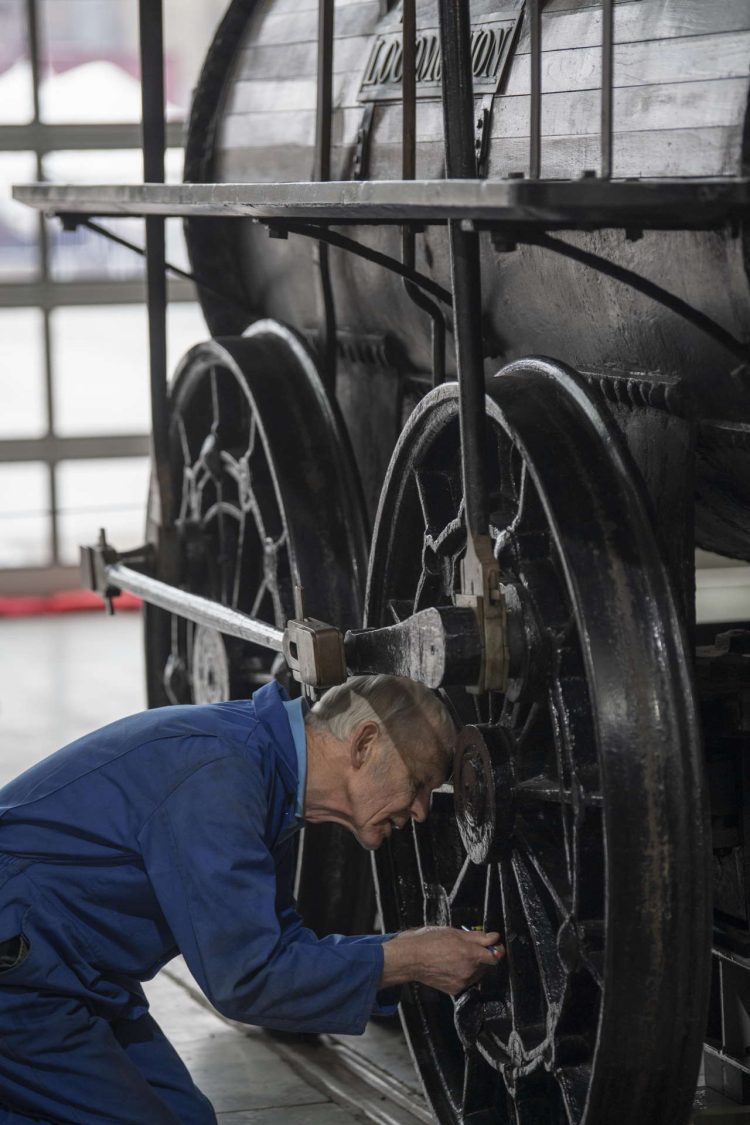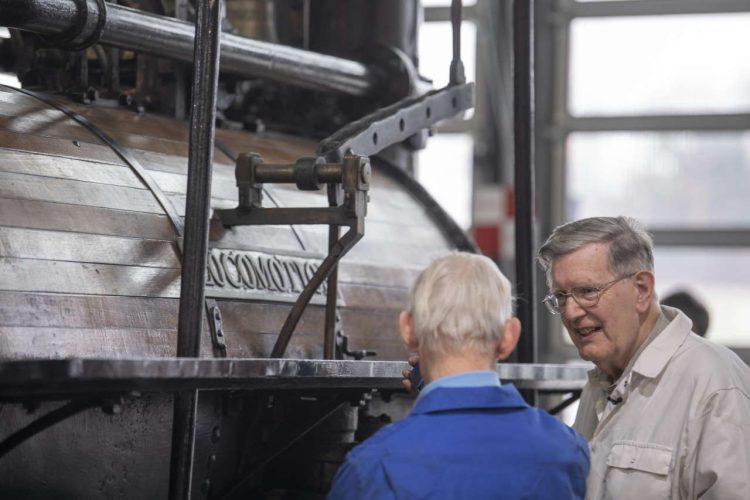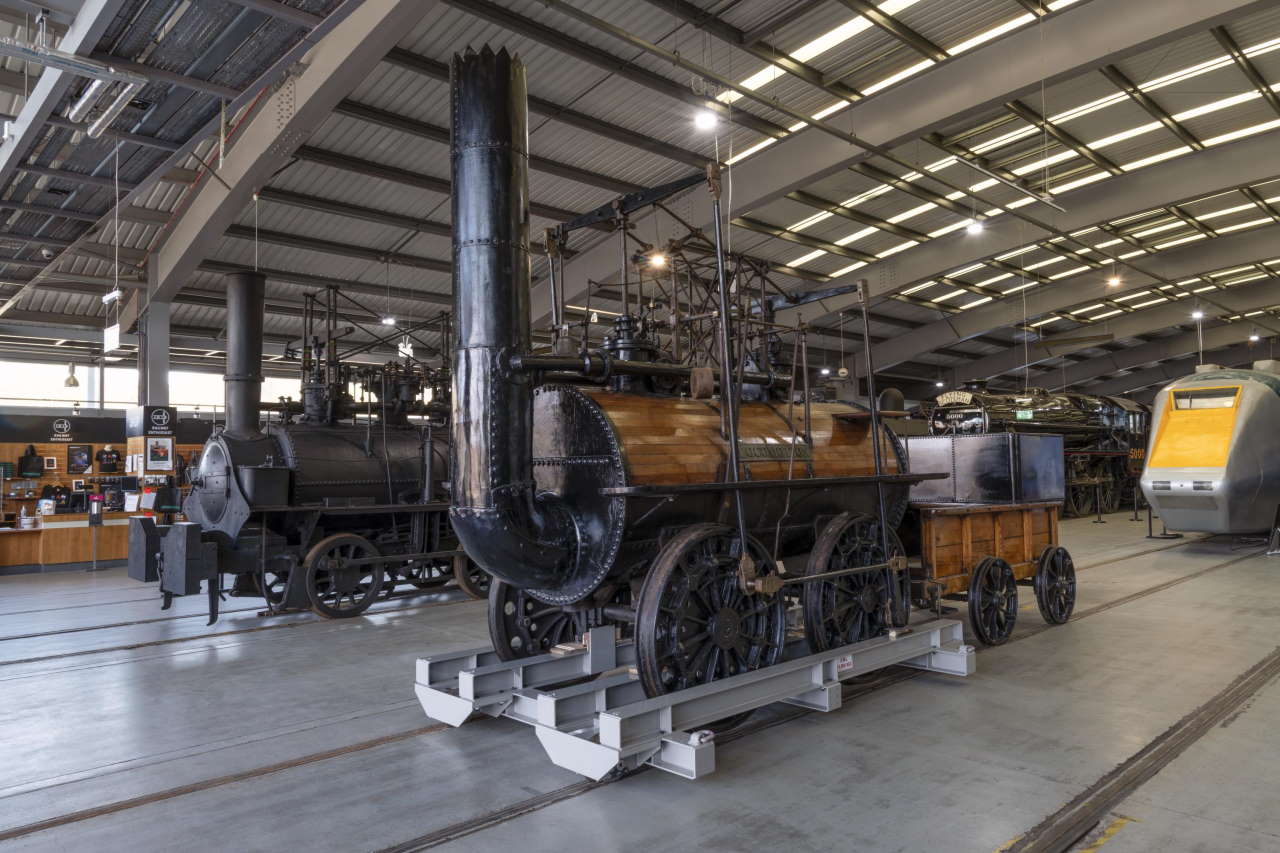Early railway experts Dr Michael Bailey and Peter Davidson have revealed new information about the first steam locomotive to carry passengers on a public railway.
Their research into one of the world’s most recognisable steam engines, Locomotion, is the most definitive archival and mechanical study of the locomotive. The report is 225 pages long, and has 399 notes and references, and provides the first full account of Locomotion’s history in operation and in preservation.
The National Railway Museum, which owns the locomotive, commissioned the research and published it on Wednesday (27 September), the 198th anniversary of the opening of the Stockton and Darlington Railway, when the loco set off from Shildon to haul the Railway’s first train.

The locomotive was introduced in 1825, one of five original Stephenson-built locos to work on the Stockton and Darlington Railway. It was withdrawn from service in 1841 and was valued at £100.
The Stockton and Darlington Railway first considered preserving Locomotion in 1856, as the report states: ‘The Directors of the Stockton and Darlington Railway have determined to preserve their No 1 Locomotive Engine, the first to run on a public railway, and have accordingly appropriated for the purpose a piece of ground in front of the station, at Darlington, where it will be placed on a pedestal…’.
In 1857, Locomotion became the first engine in the world to be preserved. It was followed by other, sometimes earlier, locos entering national collections.
Michael and Peter have worked with nine early locomotives over the last thirty years.
The report reveals that the locomotive on display today contains no identifiable parts dating back to 1825. However, its boiler barrel dates from 1827 and was originally from sister locomotive Diligence, making it the world’s oldest known standard-gauge boiler in existence today.
Like many working steam engines, Locomotion’s parts were replaced over the years, but it seems to have been substantially rebuilt several times, and to have had four distinct phases.
The last of these, which began in 1856/57, is how the locomotive appears today. While resembling its original appearance, there had been several changes, including to its flue, chimney and boiler endplates. Its distinctive parallel motion was added at this point.
Locomotion’s original name was ‘Active’, and it acquired its number in 1827. It was renamed Locomotion in summer 1833, which is likely to be when it acquired cast nameplates on each side of the boiler. The brass nameplates that it has now were added later.

The report also examines:
- the quality of wrought iron used, based on independent metallurgical analysis
- every mechanical component of the loco
- archive material about Locomotion’s operation and performance.
It includes the first definitive list of drivers and some firemen known to have worked on Locomotion. It is hoped that further research will identify living relatives of those workers.
One driver was John Cree,who was killed in 1828 when the loco’s boiler flue collapsed. This was the third serious accident involving the early locomotives within seven months.
The report records every location that the loco visited in preservation. Its journeys included trips to Chicago in 1883, where it acquired its bell, and Paris. It was displayed at Liverpool, Newcastle, Edinburgh, York, Manchester, London, Darlington and Shildon.
However, the report reveals that there is no record of Locomotion attending the 1876 centennial event in Philadelphia, USA, which it was previously thought to have done.
Michael has previously investigated other historically significant early locomotives such as Rocket, Hetton Lyon, and Killingworth Billy. He has worked with Peter on many of these projects.
Dr Michael Bailey said: “This study reveals that Locomotion played a full and successful pioneering role in the creation of the world’s railway system. Until now our knowledge of Locomotion’s story has been dictated by the appearance of the artefact itself and by the writings of Victorian historians seeking to provide their readership with stories they wished to read without the detail of its actual life experiences.
“Locomotion remains an icon of locomotive history and is the early locomotive form that is instantly recognisable today. We hope that railway curators and historians will find these results informative for a locomotive that is about to begin its third century of existence.”
Sarah Price, Head of Locomotion, said: “LOCOMOTION has become an important symbol of enterprise, engineering and innovation at a time when railways were very much a developing technology. It is incredibly important to the people of the north east as a link to our railway heritage. This research adds to our shared knowledge of LOCOMOTION and the Stockton and Darlington Railway as we prepare to celebrate the bicentenary in 2025. I would like to thank Michael and Peter for their work to produce this thorough and comprehensive research.”
As the bicentenary of the Stockton & Darlington Railway approaches, the rail industry has confirmed that it will run a programme throughout 2025 to mark the occasion. ‘Railway 200’ will examine the huge impact of railways and train travel, and will focus on the future and inspiring the next generation. As a national public engagement programme, it will include a wide variety of activities, initiatives, partnerships and merchandise. Further information can be found here.
Railway 200 is also working with Stockton & Darlington Bicentenary Festival (S&DR200) to stage a nine-month international festival developed locally. Stockton-on-Tees, Darlington and Durham County Councils are planning events. Further information on local celebrations can be found here.






Responses
He seems to have overlooked the importance and history of “Invicta” and the Canterbury & Whitstable Railway.
Presume every knows about the Rocket in the rail museum at Cairo rail station?!
Sounds rather like the Theseus’s Ship Paradox or, bringing it up to date, Trigger’s Broom, nothing left of the original but it is still considered as the original.
Fascinating article. I just dug out my childhood ladybird book on railways. Locomotion is illustrated with the name plate, it obviously never had.I take a great interest in these early locomotives, it always amazes me how railways spread, in the 10 years after the S&D , and how the development of these locomotives accelerated.
I agree. Equally fascinating, and indeed awe-inspiring, is the story of how they constructed the railways themselves. Those huge cuttings and embankments all constructed with man power and horse power alone.